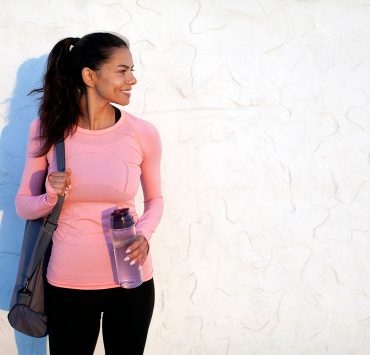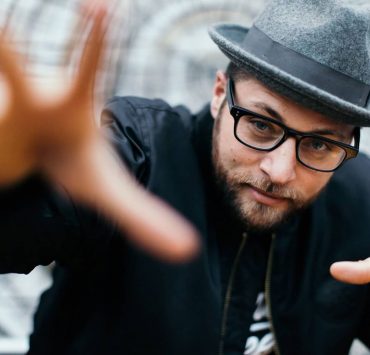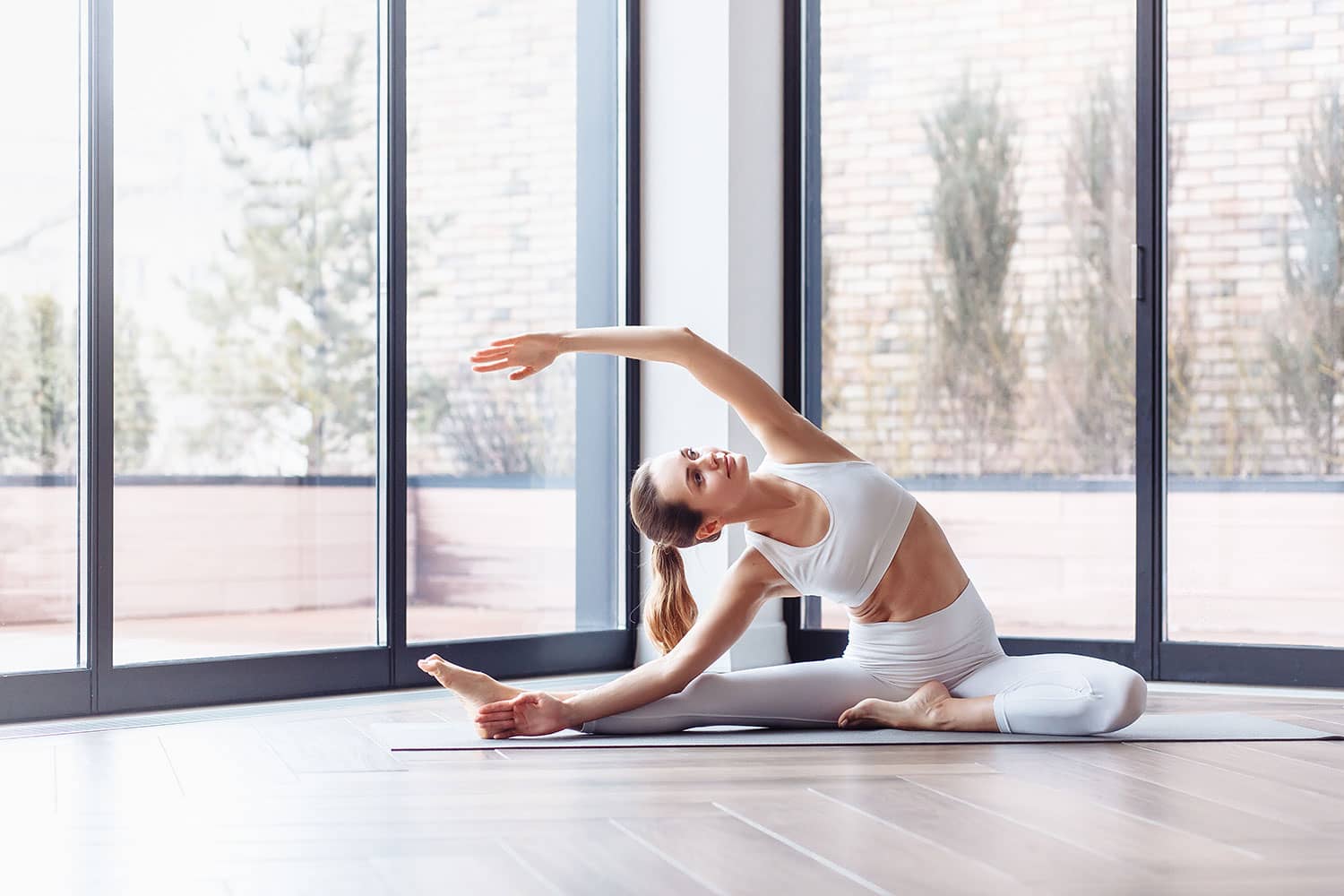
Having been a teacher’s assistant at over 50 yoga teacher…
Improving range of motion is one benefit of having a regular yoga practice. When describing range of motion, there are a few terms used as descriptors. Two of these terms are “mobility” and “flexibility.’
What is Mobility?
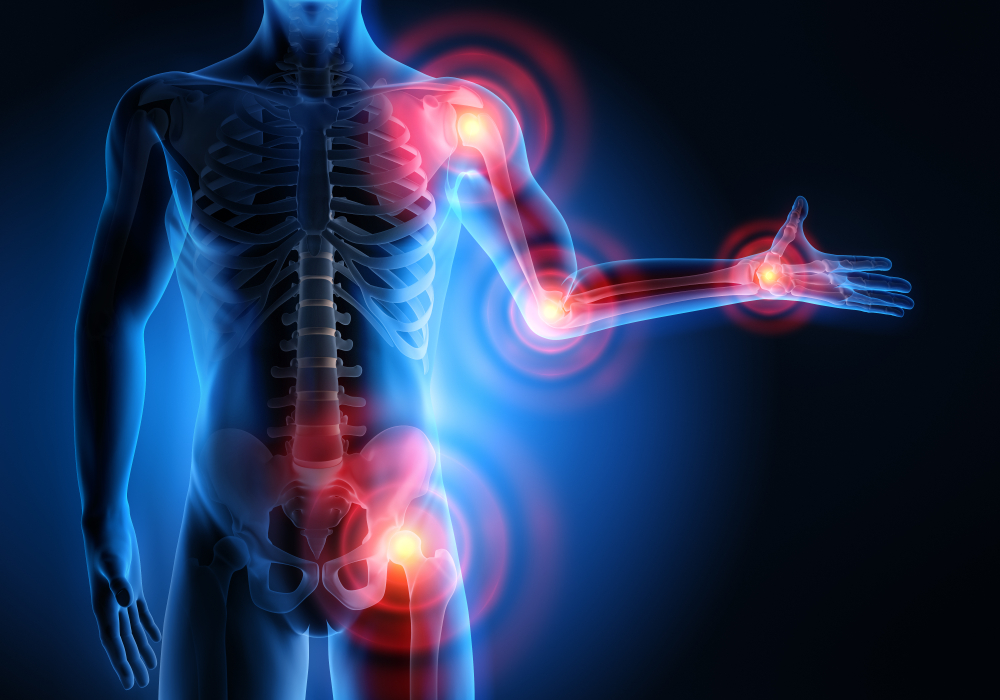
When referring to improvements in mobility, you are describing creating more movement in your joints and joint capsule.
A joint is where two bones come together to create movement. For example, your knee joint is created by the joining of your femur and your tibia. Your spine consists of a series of joints, as each vertebra stacked upon one other creates a joint.
There is a certain amount of expected movement at each joint in your body. People who have less movement in their joints are called “hypomobile.” These yoga practitioners may experience difficulty with postures which challenge range of motion.
Those who have more movement than normal are called “hypermobile.” These yoga practitioners are often successful in postures which challenge range of motion. However, this increased mobility may cause difficulty with stability based postures.
What is Flexibility?
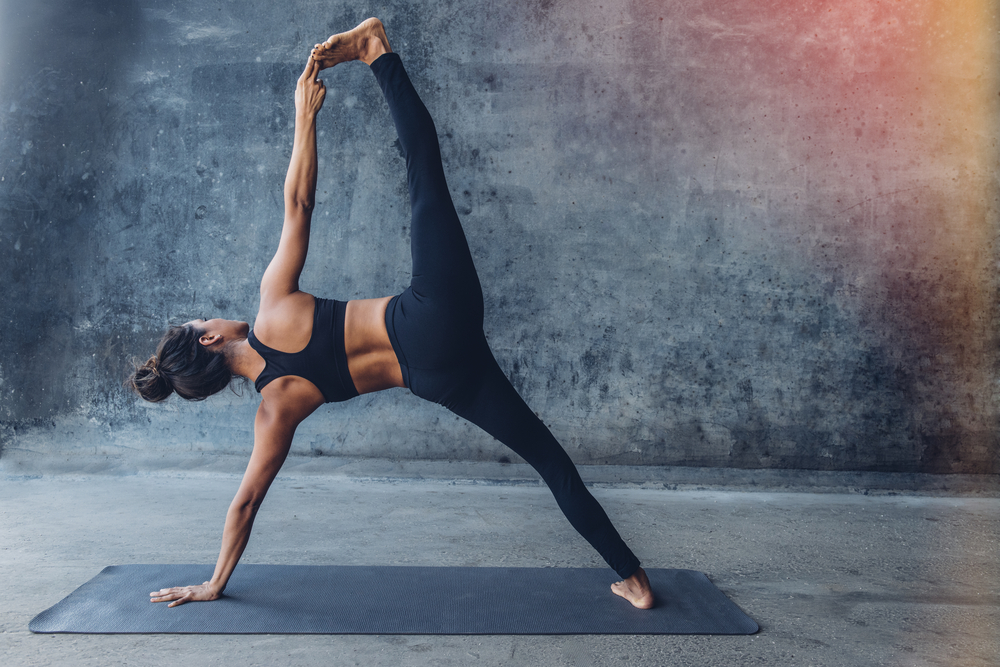
Flexibility refers to how much length you have in your muscles. A muscle is a soft tissue structure in your body that creates motion. Each joint has several muscle groups that cross over the joint to create movement.
When muscles are restricted in length, your range of motion can be restricted. This can create a sense of tightness or rigidity in your body.
Muscles can also be chronically lengthened. Like hypermobile joints, over lengthened muscles can contribute to difficulty with stability based postures.
10 Tips to Achieve Both Mobility and Flexibility:
To achieve your range of motion goals, it is important that your yoga practice incorporates both mobility and flexibility. Read on to how!
Understand Muscles vs Joints
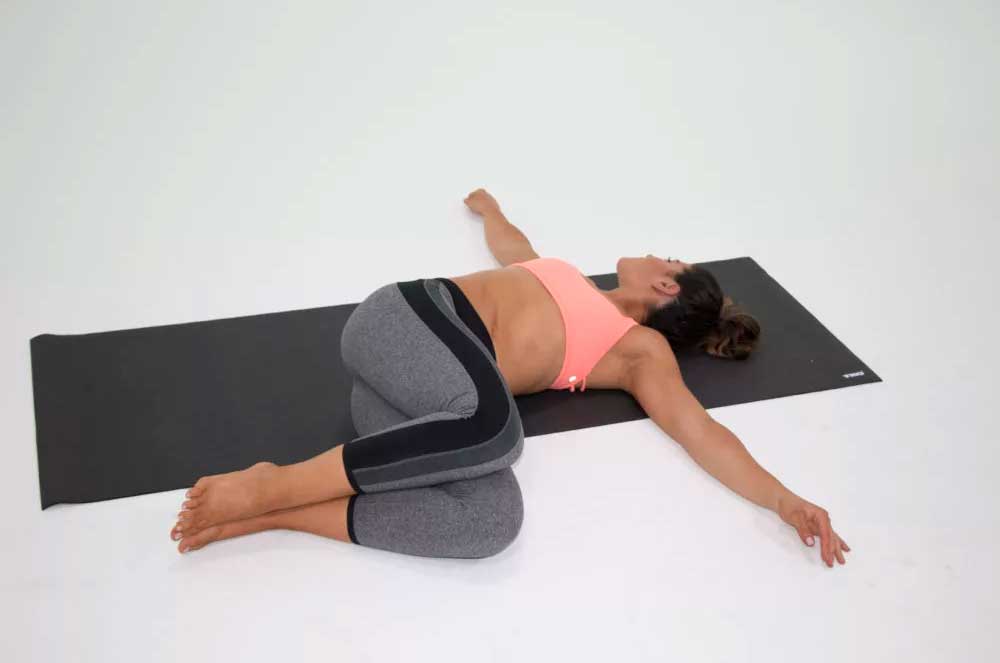
The first step in making sure you are addressing both mobility and flexibility in your practice is to increase your anatomy knowledge. To correctly increase muscle length or joint mobility, you need to know where one is vs the other.
For example, if you want to improve your backbends you are looking to increase the flexibility of your pectorals and the mobility of your thoracic spine.
You will choose postures that stretch out the pectorals. Examples of such postures are Supta Matsyendrasana- Supine Twist or Baddha Utthita Parsvakonasana- Bound Side Angle Pose.
To improve the mobility of your thoracic spine, try Matsyasana- Supported Fish with blocks. Transitioning between Marjaiana/ Bitilasana- Cat/ Cow.
Understanding which structures you mobilize vs which you stretch will help you achieve goals in your asana practice, as well as balance your orthopedic range of motion gains.
Vary The Hold Time in Your Postures
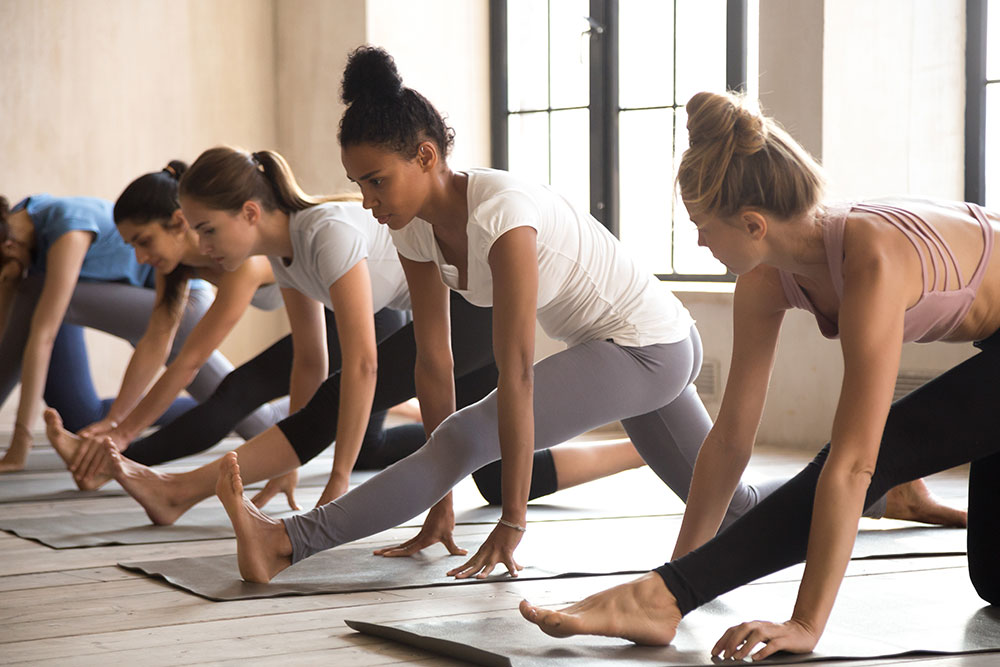
Deciding how long to hold postures in your practice can be confusing. If you are looking to increase flexibility, choose hold times of about 30 seconds (5-8 slow breaths). For example, if you are hoping to improve your hamstring length you will choose a posture such as Ardha Hanumanasana- Half Split and hold each side for 30 seconds.
In contrast, if your goal is to improve joint mobility, choose breath to movement based hold times.
For example, if your goal is to improve your knee extension mobility, you would choose a pose such as Ardha Hanumanasana- Half Split. Instead of holding the posture for an extended duration as you would for flexibility, in this case you will incorporate breath to movement style pulses.
Begin kneeling. Step your right foot forward, then shift your hips back so your right knee is straight. Use blocks under your hands as needed.
As you inhale, shift your weight forward so your right knee bends into a lunge. On your exhale, shift your hips back into a half split. Continue for 5 rounds of breath in this pulsing transition, then repeat on the other side.
Use Props
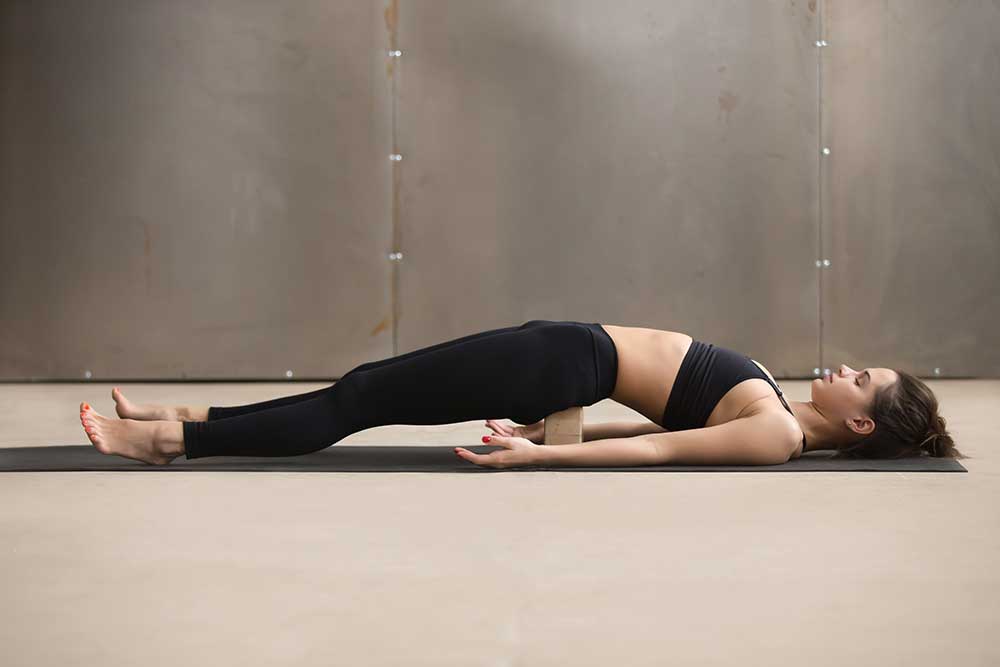
Blocks, straps, pillows, and foam rolls can help transform a pose to achieve your range of motion goals.
Adding a block to Setu Bandha Sarvangasana- Bridge Pose changes a usually active backbend into a more restorative option to improve the flexibility of your hip flexors. Begin lying on your back with your knees bent and the soles of your feet on the mat. Place your feet hip-width apart.
Engage your abdomen and lift your hips. Slide a block underneath your sacrum, then lower your hips so you are resting on the block. Compared to an active bridge where you feel glutes, quadriceps, and hamstrings engaged, in this variation with your prop you will feel your hip flexors stretching. Hold for 8 breaths.
Balance Mobility and Flexibility
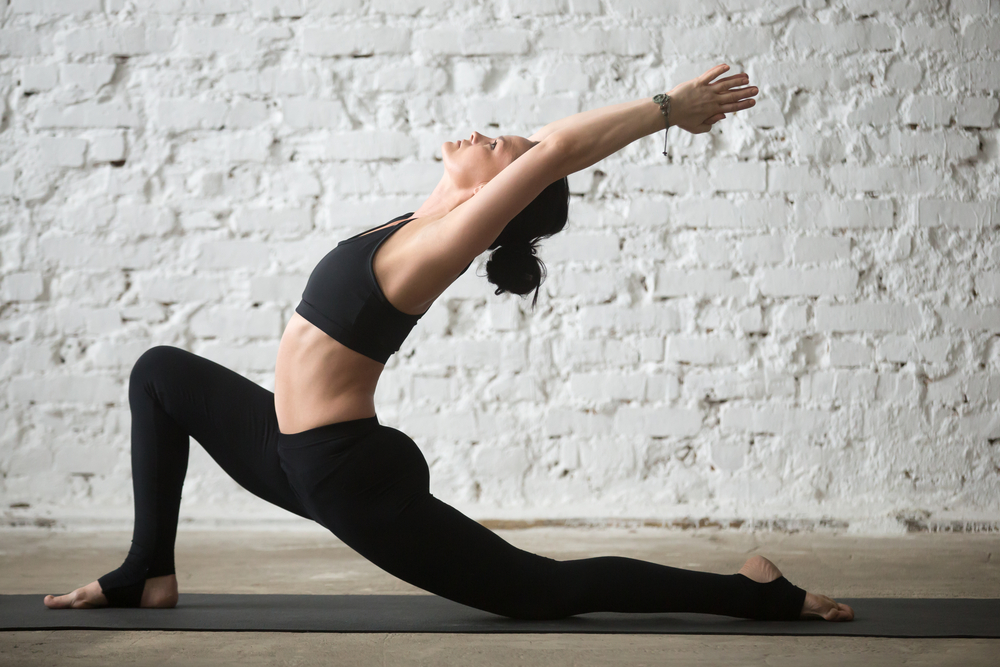
For the optimal range of motion benefits, try to balance how much mobility your body has with your flexibility. Someone who is hypermobile, meaning having more than average mobility in their joints, is at risk for muscle and tendon injury if they do not have enough muscle flexibility.
Let’s consider Anjaneyasana- Low Lunge as an example. In this posture, you have the option to improve your hip flexor flexibility and your hip joint mobility.
Begin kneeling. Step your left foot forward into a lunge. Align your left knee on top of your ankle and center it between your second and third toes.
Engage your abdomen and inch your right knee back until you feel a stretch in your right hip flexor. To improve your flexibility in your right hip, hold this pose for 5 breaths. To work on your mobility, inhale and rise out of the lunge 2-3 inches. Exhale and sink back into the lunge. Continue for 5 rounds of breath.
Take these considerations into your asana practice to balance mobility and flexibility to achieve your range of motion goals and reduce the risk of injury.
Build Strength
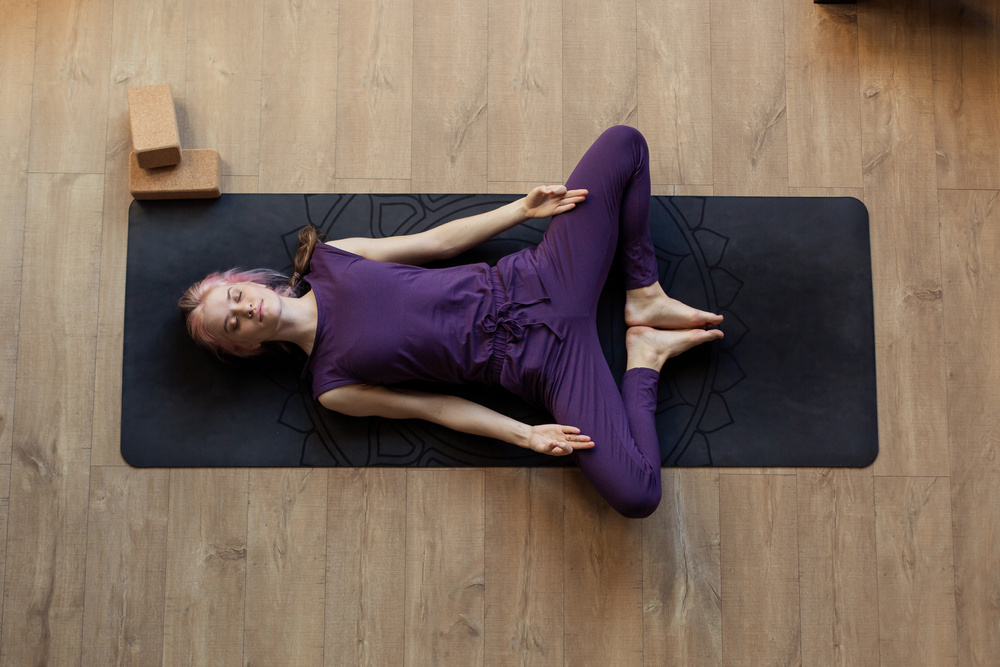
Typically a tight muscle is a weak muscle. Strong muscles are able to stay strong and lengthened. Strong muscles successfully move their respective joints through a range of motion.
When adding strength into your routine, look to strengthen the opposite muscle that you are hoping to lengthen. For example, if you want more hip flexor length, you will want to strengthen your hip extensors (gluteals and hamstrings).
Stay Consistent
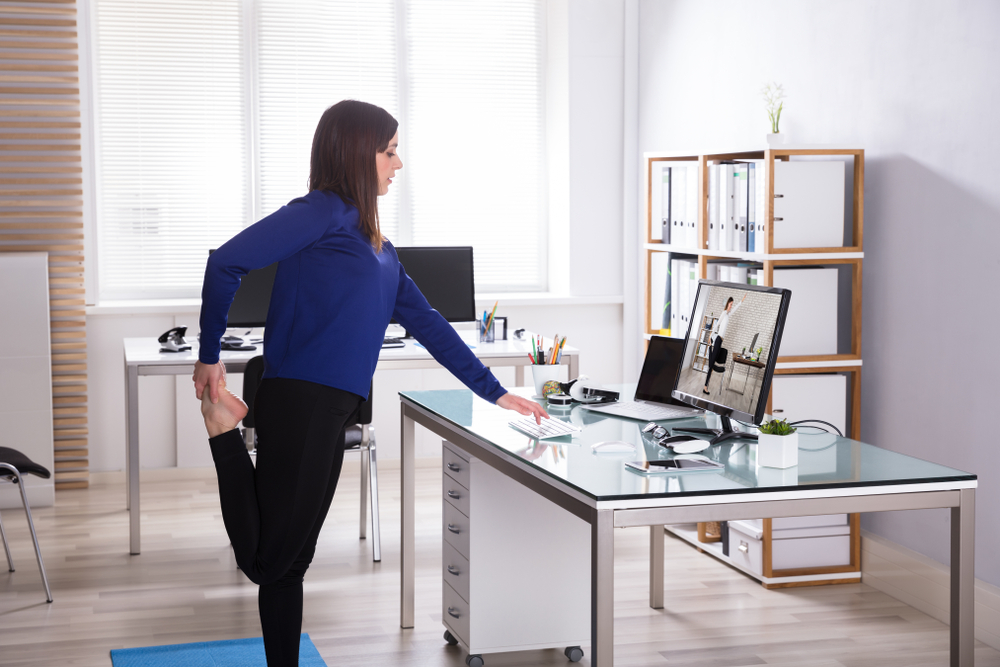
Aim to work on your mobility and flexibility several days per week for 20-30 minutes. Muscles and joints need consistent attention to maintain the range of motion benefits that you are looking to achieve.
There are a few strategies to keeping your practice consistent. Try choosing to practcie in a time of day where you are least likely to get distracted from your planned yoga time. Maybe this is first thing in the morning, or perhaps on your lunch break from work.
Recruiting a friend or family member can also help you stay on track. Plan to meet up at your favorite studio, or even at your home or an outdoor park.
Warm-Up
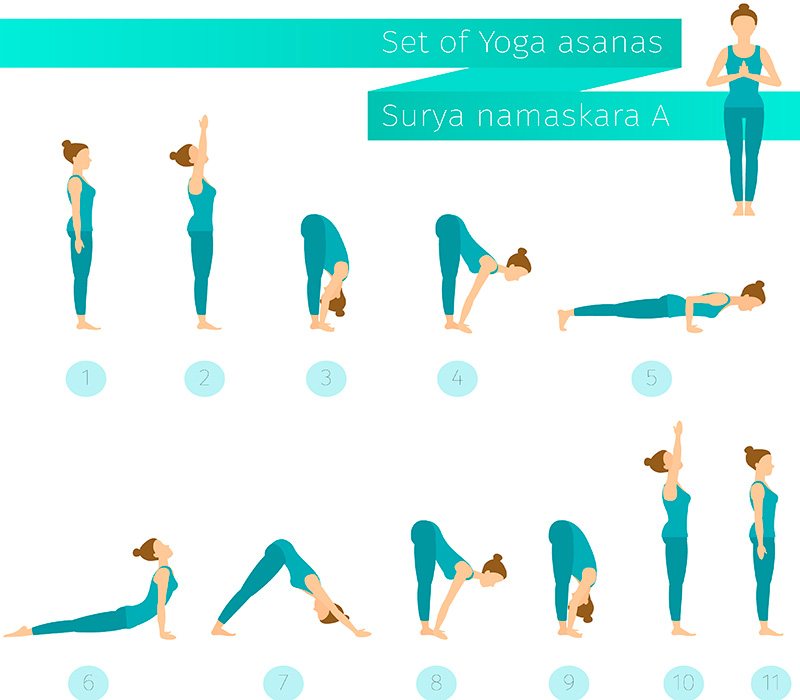
Muscles and joints respond best when they have been properly warmed up in preparation for stretching.
Prior to your range of motion focused practice, try 10 rounds of Surya Namaskar A- Sun Salutation A. You can also go for a 15-minute walk, or try a short home cardio workout.
Taking this time prior to your stretching will help your muscles lengthen and your joints improve in mobility. You will also be reducing your risk of injury!
Use a Partner
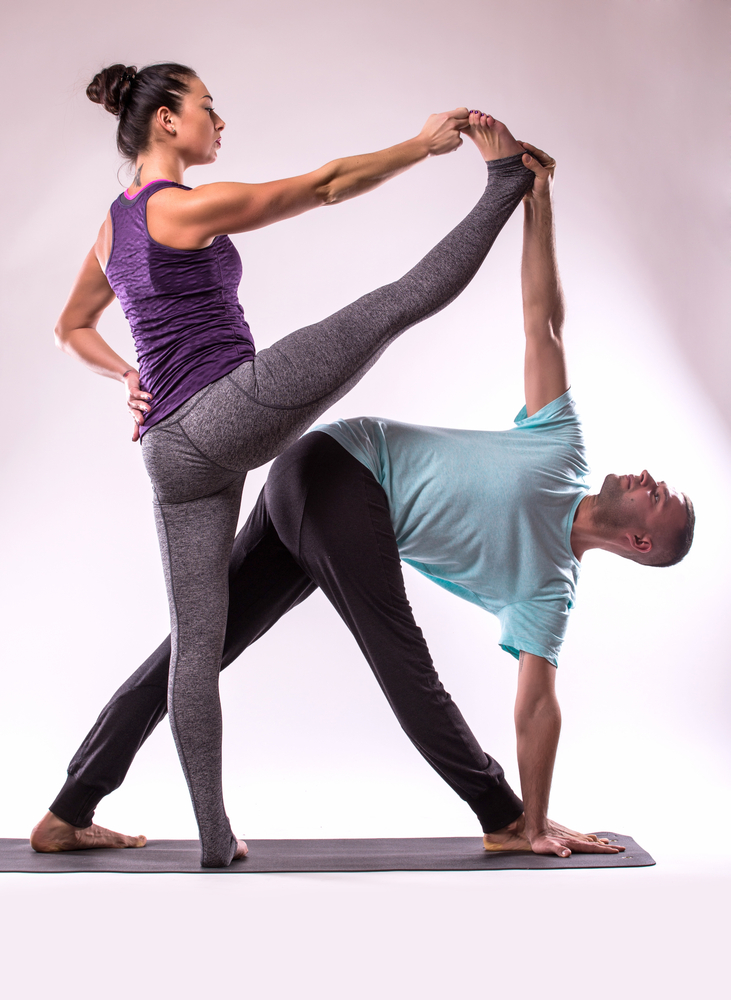
With the help of a partner, more poses become available to help you improve your mobility and flexibility. Partners provide additional support, balance, and sometimes even gentle pressure to deepen your posture.
Let’s consider Upavista Konasana- Seated Wide-Legged Fold. Begin sitting on your mat towards the long edge of the mat. Straighten your legs out wide towards the top and back edge of the mat.
Ensure that your feet are pointing straight up to the sky. Now enlist the help of your partner. Your partner will sit facing you in a similar matter. The soles of his feet place onto the insides of your ankles. Your partner can use his feet to open up your legs wider.
Both you and your partner reach your hands towards each other and grab onto each other’s elbows. Engage your abdomen, and then your partner begins to lean his body back until you feel a stretch.
Compared to doing this stretch alone, you get the extra assistance for a deeper pose with the help of your partner’s feet and him leaning back. Hold for 8 breaths.
Identify Where You Can Improve
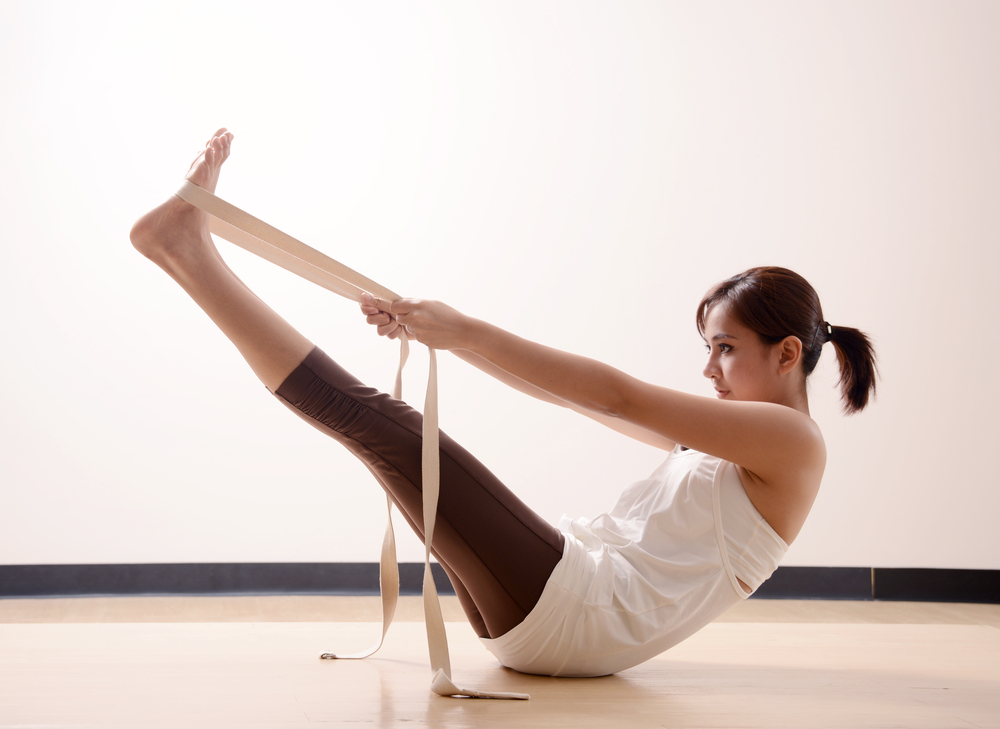
We all have regions in our bodies that may feel more restricted than others. All regions of our body work together during daily tasks. For our bodies to achieve optimal mobility, it is important that all regions in our bodies move well.
For example, for your knee to achieve your range of motion goals, your ankle and hip must also have good mobility and flexibility.
Try to spend a few minutes dedicated to your least flexible body regions each time you practice. After a few weeks, you will notice the difference!
Pay Attention to Form
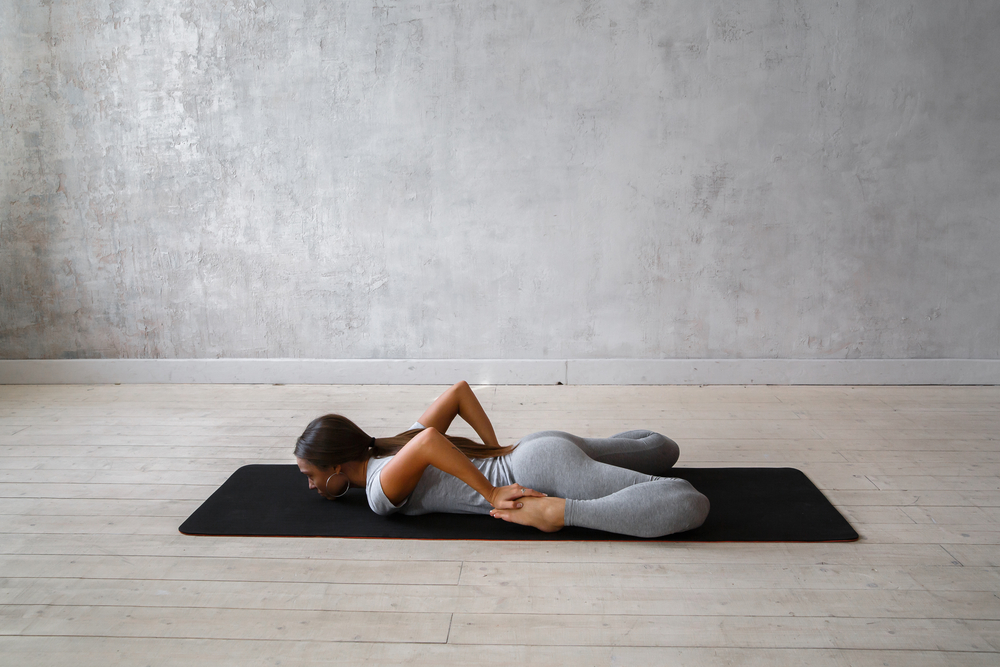
When your goal in your practice is to improve your mobility and flexibility, your form in your asana practice is important. Each pose you practice has a muscle group or joint you are hoping to influence.
To avoid injury and to best target the desired structure, take a few moments to check your alignment in each pose. If you feel uncertain about your alignment, try taking a class with a local instructor for some pointers. You can also try an online class, a yoga posture textbook, or search the web for cues.
Mobility and flexibility are both important components to improve your overall range of motion. Try one or two of these tips in your practice each week to broaden your knowledge and to ensure that your practice is addressing both!
What's Your Reaction?
Having been a teacher’s assistant at over 50 yoga teacher trainings worldwide, Olivia May has a firm grasp on the fine art of yoga and meditation. In her work, she carefully reflects on a vast expanse of knowledge to help others find peace in both body and mind.






